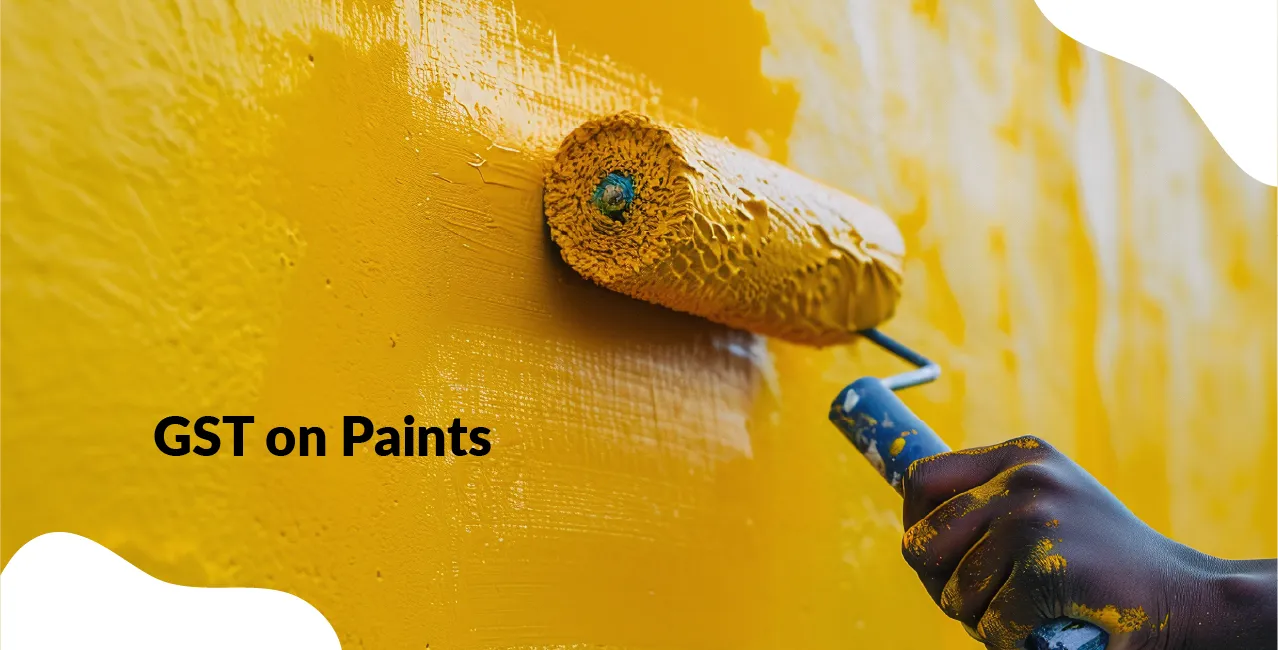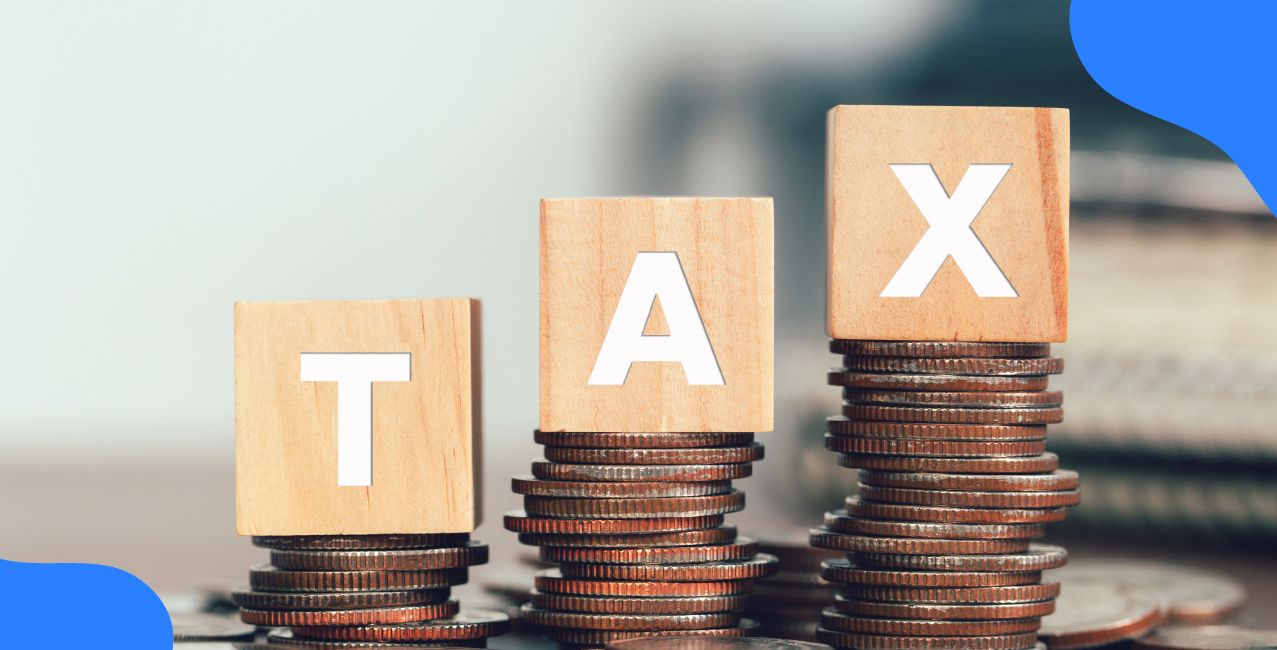
Author
LoansJagat Team
Read Time
6 Min
02 Jul 2025
GST on Paints – Tax Rate, HSN Code & Cost Impact
GST on paints is generally charged at 18% under the Goods and Services Tax system. This rate applies to most types of paints, including oil-based and water-based varieties.
Suppose you buy a can of paint priced at ₹1,000. The GST charged will be 18%, which means you pay ₹180 as tax. So, the total price becomes ₹1,180.
If a painter buys paint worth ₹5,000 (plus ₹900 GST), and later charges ₹10,000 (plus ₹1,800 GST) for painting a house, the painter can claim an input tax credit of ₹900 to reduce the GST payable.
GST on Paints – Types, Prices, and Tax Rates
All categories of paints above attract a uniform GST rate of 18%, comprising 9% CGST and 9% SGST. This rate is applicable regardless of the medium (aqueous or non-aqueous) or intended use, such as industrial coatings or decorative finishes. Consumers and businesses alike should be mindful of these rates while making purchases or claiming input tax credit under GST.
Categories of Paints with HSN Codes
Under the GST system in India, all paints and varnishes fall under specific HSN codes. Emulsion paint is listed under HSN code 3209 and attracts 18% GST. Here is how a shopkeeper calculates the invoice:
The shopkeeper adds ₹450 as GST to the base price of ₹2,500. So, the final invoice total becomes ₹2,950.
So, the shopkeeper must charge ₹2,950 in total, which includes both the price of the paint and the applicable GST. This example shows how GST is applied using the correct HSN code and tax rate.
Below is a detailed table showing various categories of paints along with their corresponding HSN codes and applicable GST rates:
Impact of GST on the Paints Industry
The Goods and Services Tax (GST) has significantly transformed the indirect tax system in India, affecting various industries, including the paints sector. Before GST, multiple taxes such as excise duty, VAT, and entry tax were levied at different stages. Now, a uniform GST has replaced them, bringing both advantages and challenges.
Positive Effects:
- Simplified Tax Structure – Replaces multiple indirect taxes with one unified tax.
- Input Tax Credit (ITC) – Manufacturers can claim credits for taxes paid on raw materials like resins, solvents, and packaging.
- Improved Logistics – With the removal of check-post delays, transportation and warehousing have become more efficient.
- Formalisation – Encourages small-scale manufacturers to register under GST, increasing compliance.
Negative Effects:
- Higher Tax Rate – Paints attract a high GST rate of 28%, making the end product more expensive for consumers.
- Working Capital Pressure – Due to the upfront payment of GST, companies may face temporary cash flow issues.
Positive Effects:
- Simplified Tax Structure – Replaces multiple indirect taxes with one unified tax.
- Input Tax Credit (ITC) – Manufacturers can claim credits for taxes paid on raw materials like resins, solvents, and packaging.
- Improved Logistics – With the removal of check-post delays, transportation and warehousing have become more efficient.
- Formalisation – Encourages small-scale manufacturers to register under GST, increasing compliance.
Negative Effects:
- Higher Tax Rate – Paints attract a high GST rate of 28%, making the end product more expensive for consumers.
- Working Capital Pressure – Due to the upfront payment of GST, companies may face temporary cash flow issues.
Example:
Input Tax Credit (ITC) on Paints
Under the Goods and Services Tax (GST) regime, input tax credit (ITC) allows manufacturers, dealers, and service providers in the paints industry to claim credit for the GST paid on inputs and input services used in the course of business.
Eligible Inputs in the Paint Industry:
- Raw materials (e.g., pigments, resins, solvents)
- Packing materials (e.g,. tins, drums, labels)
- Capital goods (e.g., mixers, coating machines)
- Services (e.g., transportation, advertising, maintenance)
Let’s say a paint manufacturer buys raw materials like pigments and solvents worth ₹50,000. He pays 28% GST on these materials, which comes to ₹14,000. So, the total cost of purchase becomes:
₹50,000 + ₹14,000 = ₹64,000
Later, the manufacturer sells finished paint cans to a retailer for ₹1,00,000. Since the GST on paints is 28%, he adds ₹28,000 as GST. So, the total invoice amount to the buyer becomes:
₹1,00,000 + ₹28,000 = ₹1,28,000
Now, since the manufacturer already paid ₹14,000 as GST while buying raw materials, he can claim this amount as Input Tax Credit (ITC).
So, instead of paying the full ₹28,000 to the government, he deducts the input tax already paid:
₹28,000 – ₹14,000 = ₹14,000
This means his net GST liability is ₹14,000, which he needs to pay. This helps businesses avoid double taxation and reduce overall costs.
Conclusion
The implementation of GST in the paints industry has brought both advantages and challenges. On the positive side, it has simplified the tax structure, improved transparency, and allowed manufacturers to benefit from input tax credit, reducing the cascading effect of multiple taxes.
To maximise the benefits, businesses must ensure proper record-keeping and timely return filings. A possible future reduction in tax rates could further support affordability and encourage higher consumption.
FAQ’s
1. What is the GST rate on paints?
The GST rate on paints is 28%, which is one of the highest tax slabs under the GST structure.
2. Can businesses claim input tax credit on paints?
Yes, businesses can claim input tax credit on GST paid for raw materials and services used in making or selling paints.
3. Has GST made paints more expensive?
Yes, due to the 28% GST rate, the overall price of paints has increased compared to the pre-GST era.
4. What taxes did GST replace in the paint industry?
GST replaced excise duty, VAT, service tax, and other state-level taxes, creating a single tax system.
5. Does GST help manufacturers in the paint industry?
Yes, GST helps manufacturers by allowing input tax credit and reducing the cascading effect of taxes.
Other Important GST Pages | ||||
About the Author

LoansJagat Team
‘Simplify Finance for Everyone.’ This is the common goal of our team, as we try to explain any topic with relatable examples. From personal to business finance, managing EMIs to becoming debt-free, we do extensive research on each and every parameter, so you don’t have to. Scroll up and have a look at what 15+ years of experience in the BFSI sector looks like.

Quick Apply Loan
Subscribe Now


